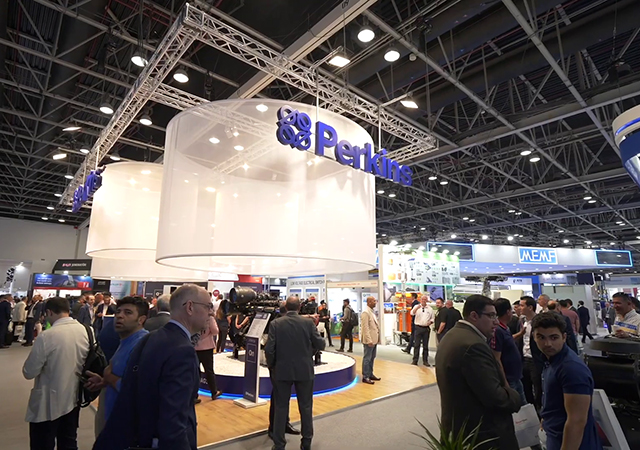
 A pest control technician spraying to eradicate crawling insects
A pest control technician spraying to eradicate crawling insects
Being the largest economy in the Middle East, Saudi Arabia dominates with a rapid growth of food consumption. The GCC food services market which comprises of full-service chain restaurants, quick service restaurants (QSR), cafes and bakeries, stood at SR70.5 billion ($18.6 billion) while the kingdom’s total food service sales were valued at SR33.3 billion (8.87 billion), accounting for nearly half of the
regional market.
Unfortunately, this enormous market is at the risk of irritating pests. According to local newspapers, thousands of restaurants in different cities were forced to close over the health violations during 2015 and 2016. The number of eateries shut down is counted as high as 12,000 and further 16,000 food tellers being quoted due to violations. It’s known that 11 different types of destructive bacteria were found in the local food outlets.
Food poisoning phenomenon poses serious threats to the lives of general public and children to get sick, hospitalised and also deaths in severe cases. Many individuals in the food manufacturing and safety business, as well as the usual consumers are aware of the ongoing wave of food contamination events, illnesses and deaths. Although food can be contaminated during any point of time in food production, unhygienic conditions tied with the illness-carrying pests in food and beverages can cause prevalent outbreaks of diseases. It is hereby obligatory for the supervisors of food, beverage processing facilities and warehouses to be fully aware of the risks posed by different pests which are the primary culprits behind adulteration and contamination.
These facilities have the potential to provide perfect environment to a variety of pests, such as cockroaches, flies, rats, mice and stored product pests like beetles, weevils and moths, sufficient reservoir of food, water and hiding spots for nesting.
COCKROACHES
Cockroaches are said to be around for millions of years, developing into some of the most adjustable pests on earth. Apart from their scary appearance, cockroaches can disperse at least 33 kinds of bacteria, six kinds of parasites and seven other kinds of pathogens. They spread diseases, trigger allergies and intensify asthma symptoms. They transport germs and debris on their legs while crawling over sewage and wreckages, relocating to food, food surfaces and processing equipment.
 |
|
Focusing on the channels through which cockroaches and other pests can travel |
FLYING INSECTS
Different kind of flying insects, for instance houseflies, mosquitoes are not only annoying pests, but also the carrier of major diseases and food pollution. Researchers say that flies have the tendency of spreading as high as 100 pathogens. By flying from trash and filth to fresh food, processing equipment and other surfaces, they have sufficient opportunities to transmit disease-causing bacteria and contaminate everything they contact.
RAT AND MICE
Rats and Mice, generally called rodents, are a biggest problem in food processing and storage facilities. The accumulation of excrement arises with the urination by these pests, which easily blowouts several diseases and contaminates food. Besides numerous health risks, rodents can also chew wallboard, cardboard, wood and even electric cabling, instigating extensive damage and posing fire hazards. On annual basis, rats contaminate and destroy enough food throughout the world to feed 200 million people.
STORED PRODUCT PESTS
This group of pests includes flour beetles, weevils and moths, which can infest food plant equipment and adulterate food by leaving their body parts inside. Additional concern is, these pests may inadvertently be milled into food products or infest flour, grains and cereals that are then shipped to grocery stores, restaurants and other food outlets.
INSPECTION OF KITCHENS
A worthy inspection is key to successful plan for pest management which is accompanied by a powerful flashlight, an inspection mirror, knowledge and experience related to kitchen pests. Prior to look around, a conversation with the client can help in finding out everything about the pests they are seeing and where the activity is focused. Though every kitchen is different, yet here are a few areas which should always be inspected thoroughly:
Damp places: Water is the main attraction for any pest, so inspect sinks, dishwashers, pipes, air conditioners, coolers and refrigerators, and other areas of water pooling and condensation. Give special attention to drains and wet floor mats, which can become breeding grounds
for small flies.
Food debris accumulation areas: Look in the apparent areas where food is stored, prepared and served, and where trash is discarded but also in less noticeable places.
Storing rooms: Cardboard containers and other litter offers harborage to cockroaches, rodents and ants. Some of these pests actually get inside with food and other supplies, and make the storeroom their home.
Warmth sources: If a piece of equipment generates heat, pests will gravitate towards it. Look behind and under dishwashers, stoves, refrigerators, freezers and coolers.
Cracks and crevices: Look for any structure that might offer pests access to the kitchen: cracks and crevices in the wall or around pipes, gaps around electrical outlet boxes or wall fixtures etc.
Outside: Examine outdoor of the building for spots where rodents or insects might be getting in and to inspect the path from back door to the dumpster, to determine whether trash is properly disposed.
Masa Establishment, a longstanding member of NPMA and other international associations, under the leadership of Mousaied S Al Shieshakly, observes that pest management is amongst the most imperative and most challenging job. Therefore, it is crucial for restaurant personnel to invest in their business and advance their client retention through a partnership with reliable pest management professionals with whom they can work together like a team, identifying the facility’s pest threats and choose the appropriate treatment methods to prevent and eliminate potential infestations and ensure food safety.












